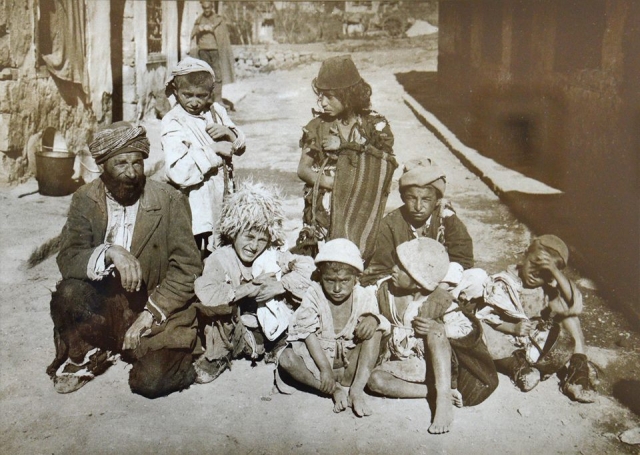Photo Exhibition Depicts WW1 Through Georgian Eyes
The Georgian National Gallery is hosting an exhibition of female amateur photographer Nino Jorjadze, dedicated to the centenary of the First World War. For the first time, the residents of Tbilisi will see this unique material, including photos, diaries and other documents from the family archives, restored by the Georgian National Museum. The book “WWI in the Eyes of a Georgian Woman” has also published.
The exhibition displays significant events during WWI, military actions, historical persons and different ethnographic groups. Jorjadze had a western education and became a member of the International Red Cross as soon as WWI broke out. Thus, Nino, as young aristocrat woman, became a thorough documentarian of the brutal times of the Caucasian front, depicting battles of Sarikamish, Kars, Begliahet, Bitlis, Karakamis, Nazik and Anis-Kala. She can be perceived as a creative person and a photo historian who played a pivotal role in the development of Georgian photography.
“The archive displays the history of a Georgian military aristocrat who was on military service in the Russian Empire and creates a photo chronicle of the Caucasian front during the First World War that is important on historical and ethnographic, social and cultural grounds. Employees of the Dmitry Ermakov photo archive department of the Georgian National Museum carried out conservation work on the photo collection. Well-known Georgian writer Aka Morchiladze worked on the Georgian translation of the diaries written in Russian. It is gratifying that this unique archive has gained interest abroad and the exhibition already has been invited to Switzerland,” Davit Lortkipanidze, Director General of the Georgian National Museum stated.
“I have always wanted to realize this project, as Nino Jorjadze was a close relative of my husband. She was single and lived with my mother-in-law. I am happy that at last, as a dedication to the centenary of WWI, the exhibition is open,” Tamar Lortkipanidze, author of the project told Georgia Today.
The extracts from Nino’s diaries are particularly enlightening including this example: “11 November. My window overlooks the mortuary which brings melancholy. Every day the abandoned, lonely soldiers are brought. That’s hideous. There are 25 unburied dead bodies in the mortuary. 12 of them have been lying there for two weeks now. No grave-diggers, not enough people. This is nothing else but barbarism not being able to pay a last tribute to the deceased.”
Jorjadze writes that she does not approve of quitting the front even in a dangerous situation, as she thinks that the sisters should be everywhere where they are needed. She also scolds those who do not look after the diseased and only attend to the wounded, as if the latter were “a tasty piece of cake”.
Jorjadze is full of protest. She depicts, when, at last, the Russians decide to feed the wounded Turks. “They are given porridge with lard. It’s really barbaric. First of all, their stomachs cannot digest the lard and everybody is down with dysentery and then how can you feed prisoners with the food that is forbidden by their religion?”
In another excerpt, she attacks the bureaucracy interfering with her work. “10 January. We do not change the bed sheets for the wounded unless they are badly torn or too filthy. We were cadging for shirts for a long time, but did not get any. And here one of the functionaries said: ‘I do have 1000 shirts, but I don’t know under which article they fall’. Paper kills all that’s alive, doesn’t allow one to do the job.”
The amateur photographer also exhibited a sense of humor, even amid such depressing and frustrating times: “General B. arrived. The buildings are being swept, the roads sanded. Now the meetings will start again for the serious, important cause of rendering the aid to patients; these meetings are like comic operas. They just act with words. People are dying like flies. There are often cases of mental derangement.”
The funds raised from the sale of the books will be entirely donated to a foundation for those who suffered from the recent Tbilisi flood. The supporters of the project are the Ministry of Culture and Monuments’ Protection and the Swiss Agency for Development and Cooperation.
Maka Lomadze











